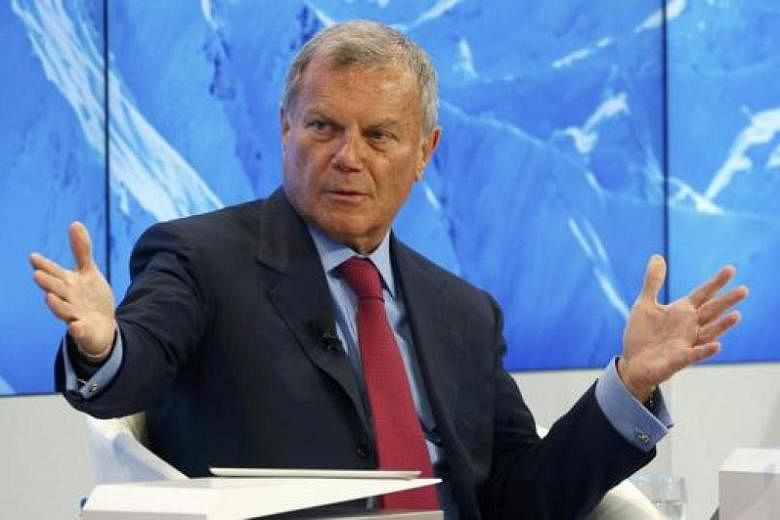LONDON (BLOOMBERG) - WPP shares suffered their biggest drop in 17 years on Wednesday (Aug 23), after the world's largest advertising company cut its full-year revenue forecast amid lower spending by its biggest customers, in particular consumer-goods manufacturers.
The stock fell by as much as 13 per cent after WPP said like-for-like revenue growth is expected to be between zero and 1 per cent in 2017. That is down from an earlier 2 per cent forecast.
Advertising companies worldwide are being hit as big clients such as Unilever and Procter & Gamble focus on cost-cutting to cope with sluggish global economic growth and technological disruption from the likes of Amazon.com.
With the company's stock having its worst day since 2000, WPP chief executive officer Martin Sorrell walked investors through a 22-point slide of outside factors sapping advertising growth worldwide as part of a marathon two-and-a-half-hour session discussing WPP's latest financial results.
The challenges included everything from slowing global growth and technological disruption to uncertainty caused by looming elections in Europe and the Communist Party Congress in China. What was less clear was what WPP could do about it. That explains why analysts do not see any relief for the stock or its peers any time soon.
Mr Sorrell also discussed delays to United States President Donald Trump's tax reforms in the US, the near-term prospect of higher interest rates and political concerns over North Korea, Afghanistan, the Middle East, Venezuela and Ukraine.
London-based WPP singled out ad spending on consumer goods - items such as laundry detergent and toothpaste that make up about one-third of its revenue - as coming under particular pressure.
Consumer-goods giant Unilever, one of WPP's biggest customers, said earlier this year that it would cut ad output by 30 per cent and halve the number of creative agencies it works with to 1,500 from 3,000. That followed a failed takeover bid by Kraft-Heinz, which was the "seminal" moment in the first quarter, according to Mr Sorrell.
"That sent a shockwave through the industry," he said by phone. "It obviously had an effect in terms of people spending, particularly in the packaged goods sector."
WPP's results feed into concerns that advertising agencies are losing out as an industry to consultants and digital platforms, said Mr Jonathan Helliwell, an analyst with Panmure Gordon in London. Internet giants such as Google and Facebook can increasingly provide advertisers with much of the services needed for online marketing, putting pressure on traditional advertising companies to react to the change.
WPP, which also works for brands such as Ford and Marks & Spencer, had already seen its shares fall 12 per cent this year through Tuesday, amid a difficult economic climate and pressure on its businesses in North America. It is now down more than 20 per cent year to date. Its biggest rivals, including Interpublic Group of Cos, Publicis Groupe and Omnicom Group, are each down by more than 8 per cent this year.
In the second quarter, WPP's like-for-like net sales fell 0.5 per cent with July declining 2.6 per cent, and North America and Western Continental Europe were the poorest-performing regions.
WPP said that it did not experience any significant loss in revenue from clients or of data from a cyberattack it suffered in June. The attack took down WPP's website and caused disruptions across businesses, including that of creative agency Ogilvy and Mather, a person familiar with the matter said at the time.
The attack cost WPP about US$10 million (S$13.6 million), US$5 million of which was covered by insurance, Mr Sorrell said. The company will spend about US$10 million to US$15 million annually on increased protection against future attacks, he added.

